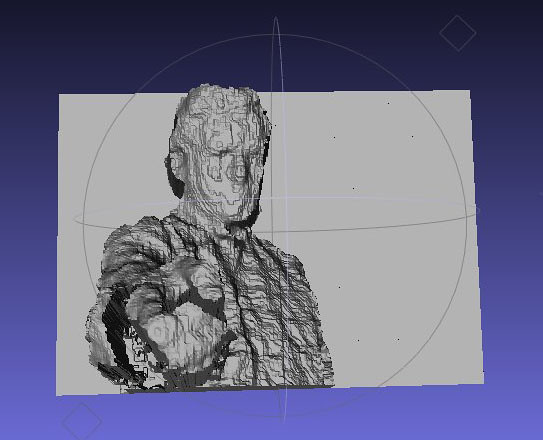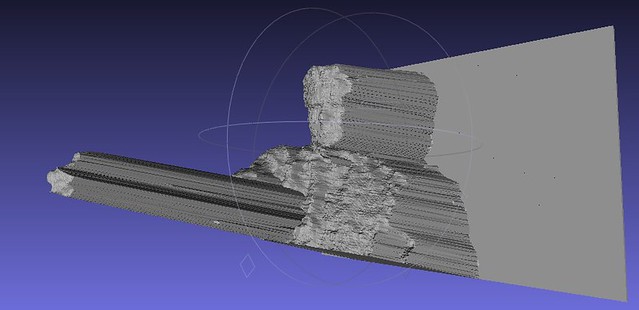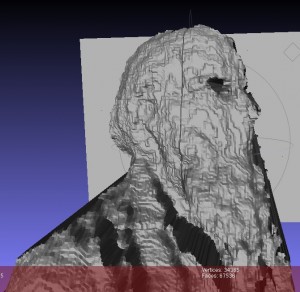I’m at FooCamp, and I’ve brought a copy of SVK fresh off the press to show some of the folk here.
The Make space at the O’Reilly HQ has Greg Borenstein showing the possibilities of Kinect-hacking, and we were playing around with pointing the UV torch that will come with SVK at the Kinect sensor… and found it punches a hole in the point-cloud of depth-data that the infra-red structured-light of Kinect senses…
It’s quite a striking ‘sensor-vernacular’ image, and my folk-physics explanation of it (at midnight last night, after some Lagunitas IPA) was that the UV was cancelling out the IR – but it might just be that any LED torch light source might have the same effect – just blowing out the sensor – can’t find anything online as yet…
I’m away from my physics–punching colleagues who would put me right in short-order I’m sure (as probably, someone here at Foo will today) but if you have any thoughts…
Update from Greg in email:
For the record, my bet is that the torch’s universe-whole punching power came from its plastic sleeve. Things that are reflective tend to do that by bouncing the IR back directly at the Kinect and giving it a blind spot. Check out the hole where Max Ogden’s eye should be in the scan we made of him last night:
Max wears glasses and his lens’ reflection caused this.
You can actually do wickedly clever things with a mirror and the Kinect to pull different bits of space into the depth image. It’s like being able to cut-and-paste space. For example, Kyle McDonald is trying to use the trick to scan all sides of an object at once.
I like using it to make wormholes…



2 Comments and Trackbacks
1. Alby said on 11 June 2011...
The Kinect’s depth-detection is done by a standard CMOS sensor that measures changes to a pattern of infrared structured light (http://bit.ly/izbIgb). It probably uses a visible light filter (e.g. crossed polaroids) to block out visible light but doesn’t include an ultraviolet filter – as there’s little UV present in the average living room – so rather than the UV “cancelling out” the IR, it is “overwhelming” it.
The Kinect’s main sensor is made by PrimeSense; you can read more about it at their website: http://www.primesense.com/?p=487.
2. Keiichi Matsuda said on 9 September 2011...
We’re currently working on a kinect-based interactive installation, which will be installed next to an installation using lots of UV light.. there’s going to be a screen protecting us from the light, but it will be a good chance to test what happens if we take the screen away.
p.s. installcell.com if anyone’s curious!